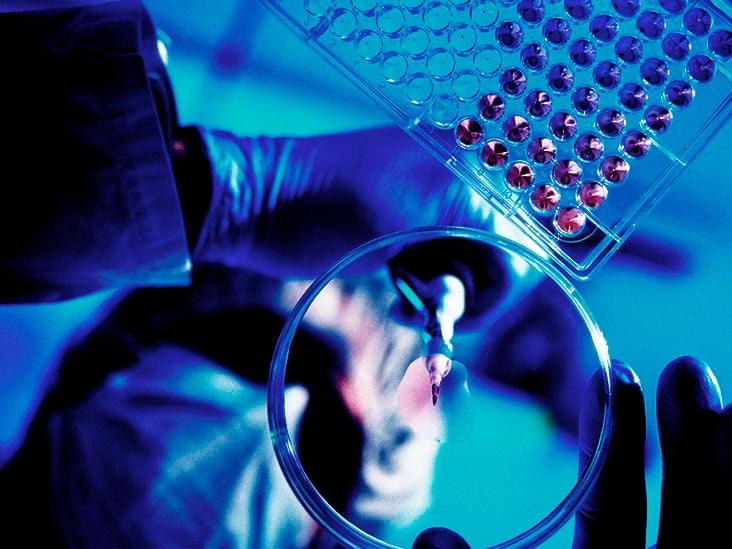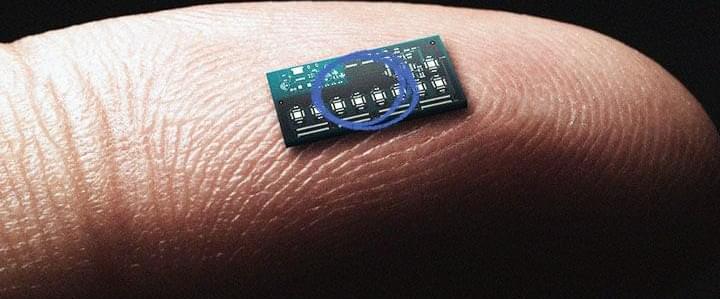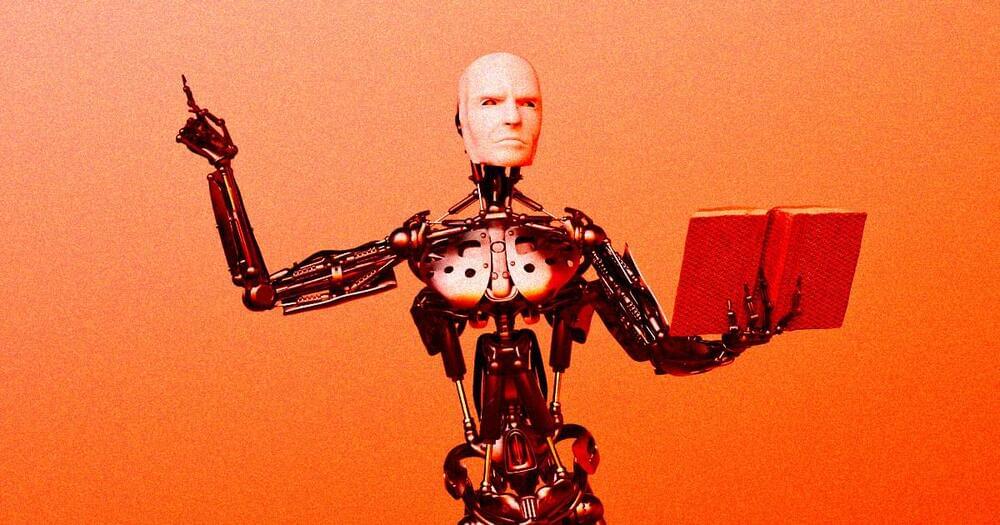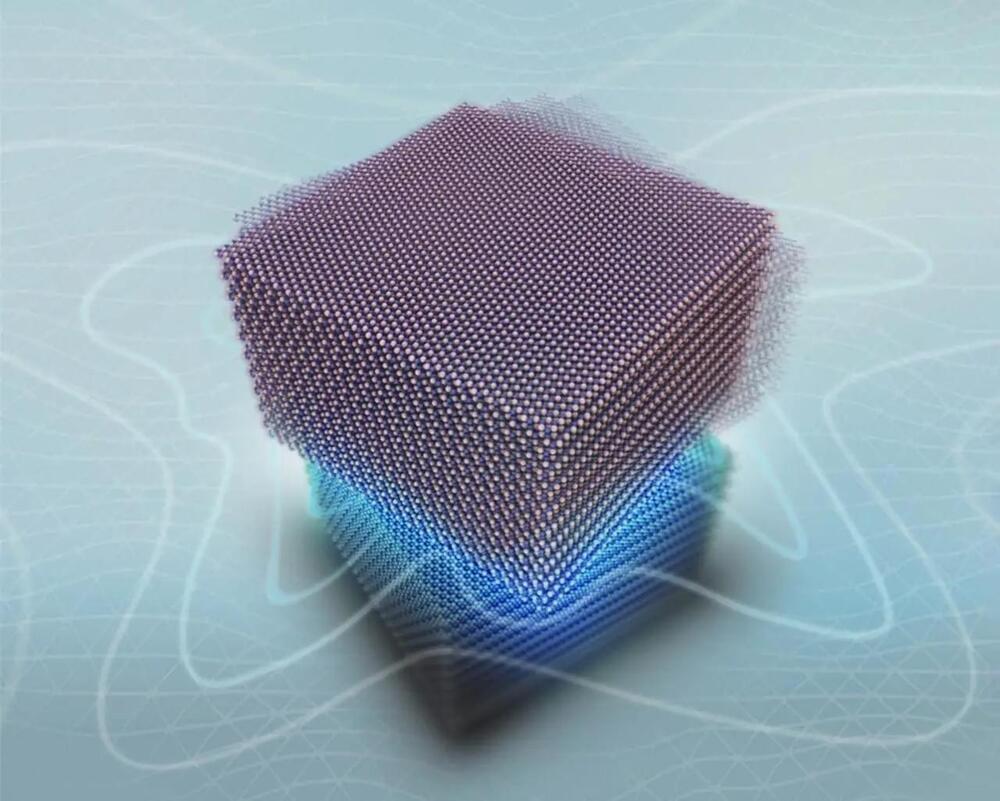Researchers looking into the health benefits of utilizing gut bacteria say they have bioengineered a probiotic that may be useful as a treatment for multiple sclerosis.



Thoughts on the future of artificial intelligence, universal accelerating change, “inner space,” Google, the metaverse, the wearable web, technology evaluation and empowerment, and cybertwins, including “digital mom”. SIAI Interview, Oct 2007. Filmed by Doug Wolens, I-MagineMedia, author of the excellent new documentary The Singularity, 2012. This is one of my favorite short interviews. Hope you like it!
Breakthrough insights in science, technology & the future; philosophy & moral progress; artificial intelligence/robotics, biotechnology.
Experience the captivating world of Quantum Computing in AI through this thrilling video! Delve into the groundbreaking realm of Quantum Computers and its revolutionary synergy with Artificial Intelligence, leading us into an era of technological revolution.
The first part of the video unravels the enigmatic concept of Quantum Computing, explaining its complex principles in a way that even beginners can understand. Watch the video to discover the magic of quantum bits (qubits) and superposition as they challenge the norms of classical computing.
Are you curious about what Quantum Supremacy is? Or what Quantum Computing in AI can truly achieve? This intriguing section showcases the extraordinary capabilities of these computing marvels, delving into the fascinating world of quantum supremacy and how it empowers AI.
Moving forward, embark on a journey into Quantum Machine Learning, a cutting-edge AI paradigm that combines Quantum Computing with Artificial Intelligence. Prepare to be amazed by its ability to push the boundaries of data processing, learning, and prediction and embarking revolution in Neural Network and Natural Language Processing. The future of quantum AI is revolutionary; you should not miss it!
The video does not stop there! We also explore real-world applications of Quantum AI, demonstrating how this technology is revolutionizing industries like healthcare, cybersecurity, finance, education and more, with unprecedented efficiency and precision.
The video sheds light on Quantum AI’s potential to solve once-unthinkable problems in areas such as molecular simulation, precise optimization, predictions, and personalization. We discover how AI with Quantum Computing solve challenges which were thought impossible to crack.
This video is a comprehensive resource for anyone interested by Quantum Computing, AI, and their synergy. Join us as we embark on this exciting journey into the revolutionary synergy between two technologies. Whether you’re a quantum computing enthusiast, an AI lover, or simply enjoy tech insights, don’t forget to Like, Comment, and Subscribe to stay informed about the latest trends!
#quantumcomputing.
#artificalintelligence.
#ai.
#futureofai.
#technology.
Chapters.
0:00-Introduction.
0:50-Simple Concepts of Quantum Computing and AI
2:30-Ways How will Quantum computing affect AI?
2:34–1) Improvement in Machine Learning Algorithm.
4:04–2) Enhanced Neural Network.
5:15–3) Advancing Natural Language Processing.
6:27–4) Solving Complex Issues.
7:02-Usability of Quantum AI Computing.
7:23–1) Fact-Checkers for AI Chatbots.
8:08–2) Benefits for Life Science.
8:50–3) Cybersecurity.
9:21–4) Impact on Education.
10:08–5) Autonomous Vehicle.
11:01–6) Logistics Industry.
11:55–7) Climate Change.
12:52-ConclusionSubscribe for more content in the fascinating field of Artificial Intelligence.
*******************
Welcome to AI TechXplorer, your premier destination for cutting-edge insights into AI trends and technology. As a channel dedicated to the forefront of artificial intelligence, we delve deep into the world of AI, latest AI trends and technology, providing research-driven insights into development of AI tools, platforms, AI news and updates in artificial general intelligence (AGI) and robotics.
Our commitment to delivering quality content begins with our rigorous research approach. Understanding that AI can be an intimidating field for newcomers, we make it our mission to provide clear and accessible explanations. Whether you are a seasoned AI enthusiast or someone who has just discovered the world of AI, our videos break down complex concepts, developments, and breakthroughs into digestible and relatable explanations. We believe that knowledge should be inclusive and approachable, and we are dedicated to making AI understandable for all.
We keep a keen eye on the latest advancements in AI, ensuring that you stay informed about the cutting-edge developments and their practical applications. By highlighting the significance of these advancements within our society, we strive to bridge the gap between AI and its real-world implications, ultimately fostering a greater appreciation for the transformative potential of AI.
🔔 Join us at AI AI TechXplorer as we embark on a journey through the realms of artificial intelligence. Together, we will uncover the latest AI trends, explore groundbreaking technologies, and unravel the mysteries of artificial general intelligence. Subscribe to our channel today and be part of the ever-evolving world of AI. 🔔.
Some yacht builders are making waves in the industry by designing zero-emission, solar-powered alternatives that outperform their diesel-chugging counterparts, and some are so quiet that you can hear the marine life swim. Furthermore, when compared to the rumble of a diesel engine, which sends the smell of diesel fumes your way, getting to smell the ocean breeze without any disruptions is a huge plus.

Author Jane Friedman was furious after discovering roughly a dozen books being sold on Amazon — with her name on them.
Fortunately, the seemingly AI-written books listed under her name ended up being taken down after she posted about the situation on Twitter and her own blog.
In an interview with The Guardian, Friedman recounted how the viral debacle began. A reader contacted her about the phony titles that mimicked her real work, which is ironically designed to help new authors navigate the publishing industry with titles like “The Business of Being a Writer” and “Publishing 101.”
😗😁Year 2015
(12 Apr 1997) English/Nat.
British and Dutch scientists using a giant magnetic field have made a frog float in mid-air, and might even be able to do the same thing with a human being.
The team from Britain’s University of Nottingham and the University of Nijmegen in the Netherlands has also succeeded in levitating plants, grasshoppers and fish.
Scientists at the University of Nijmegen in Holland have managed to make a frog float six feet (approximately two metres) in the air — and they say the trick could easily be repeated with a human.
The secret is not magic but a powerful magnetic field which overcomes the force of gravity.
The field makes the frog’s atoms generate a weak magnetic force in the opposite direction.
This causes it to be repelled in the same way as like poles of two magnets.
Plants, grasshoppers and fish have been levitated by the research team in the same way.
NASA, apparently, is extremely interested in the experiment in order to be able to test the effects of weightlessness on astronauts without having to put them into space.
Easy, says team leader Dr Andre Geim.
SOUNDBITE: (English)
There is no problem with putting a man by this magnetic levitation, to fly in the air. Technically we can do it with you without any problems.
SUPER CAPTION: Dr Andre Geim, Director of the High Field Magnetic Laboratory of the Catholic University of Nijmegen.
And for those worried about the effects on the frog — don’t worry.
He’s not hopping mad — quite the opposite, in fact.
Find out more about AP Archive: http://www.aparchive.com/HowWeWork.
Twitter: https://twitter.com/AP_Archive.
Facebook: https://www.facebook.com/APArchives
Instagram: https://www.instagram.com/APNews/
#frog #float.
You can license this story through AP Archive: http://www.aparchive.com/metadata/youtube/f760c710bc6ebc4556bfd7fb75d70404

Scientists at The University of Manchester’s National Graphene Institute have discovered new physics in graphite through the application of twistronics, revealing a 2.5-dimensional mixing of surface and bulk states. The research opens new possibilities in controlling electronic properties in both 2D and 3D materials.
Researchers in the National Graphene Institute (NGI) at The University of Manchester have revisited graphite, one of the most ancient materials on Earth, and discovered new physics that has eluded the field for decades.
The Complexity of Graphite.
